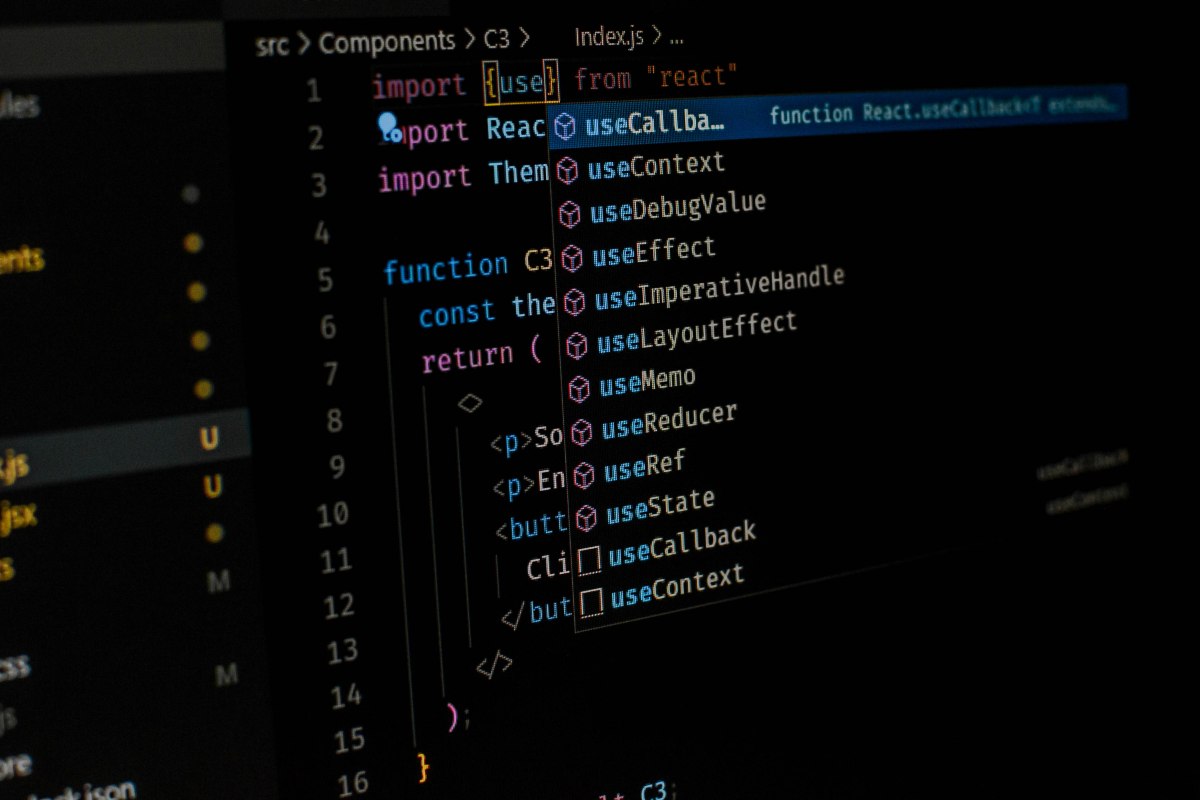Learn why source code review is essential for both pentesters and developers in preventing vulnerabilities, and how it can be a critical part of your security training.
The Importance of Source Code Review for Pentesters and Developers: A Key to Preventing Vulnerabilities
In the fast-paced world of application security, vulnerabilities are inevitable. However, understanding how to identify, fix, and avoid these vulnerabilities is critical in maintaining a secure and robust application. While penetration testing is an essential part of security assessments, it’s equally crucial for both pentesters and developers to dive into source code review. Why? Because source code review is one of the most effective ways to catch vulnerabilities early in the development .
Why Should Pentesters and Developers Learn Source Code Review?
1. Preventing Vulnerabilities from the Ground Up
Vulnerabilities like SQL injection, cross-site scripting (XSS), cross-site request forgery (CSRF), and insecure deserialization are common in applications, often introduced during the development phase. By incorporating source code review, developers can spot these issues early, ensuring they are addressed before the application is deployed. For pentesters, reviewing code gives a more granular understanding of the application’s logic, helping them conduct more targeted and practical tests.
2. Finding Vulnerabilities That Traditional Testing Misses
Penetration testing tools often rely on known patterns and attack vectors. While these tools are essential, they might miss vulnerabilities due to the complexity of modern applications or unusual code patterns. A well-conducted manual code review can reveal logic errors, improper input validation, weak encryption practices, and unintentional security holes that automated tools might overlook.
3. Faster Response to New Vulnerabilities
When a new vulnerability is discovered (such as the Log4j vulnerability), it can spread quickly through existing applications. Developers who are familiar with the code they write can more promptly analyze their codebase to identify vulnerable areas and fix them. Pentesters with a deep understanding of source code can determine which areas might be affected by newly discovered exploits.
4. Staying Ahead of Common Attacks
By reviewing source code, developers can learn common attack patterns and defense techniques, such as:
- Input validation (e.g., preventing SQL injection by using parameterized queries)
- Secure session management (e.g., using proper cookie flags)
- Least privilege principle (e.g., ensuring that users only have access to the data and functions they need)
This proactive approach is key to securing your application before it’s even deployed.
5. Building Security Into the Development Process
Code review isn’t just about finding vulnerabilities; it’s also about building a culture of security. For developers, learning how to write secure code becomes second nature. For pentesters, reviewing code teaches them about best practices in secure coding, which can help them better understand vulnerabilities and perform more thorough penetration tests.
Also Read: Source Code Review Methodologies: A Security-First Approach
Key Practices in Source Code Review for Pentesters and Developers
1. Understand Common Vulnerabilities and Their Mitigations
Having a solid understanding of common vulnerabilities (OWASP Top 10, for example) and how they manifest in code is crucial for performing effective code reviews. Here are a few key areas to focus on:
- Injection vulnerabilities: Look for unsafe data handling (e.g., SQL injection, command injection).
- Cross-Site Scripting (XSS): Ensure user inputs are sanitized and appropriately validated.
- Insecure Deserialization: Ensure objects are validated adequately before being deserialized.
- Authentication and Session Management: Review authentication logic to ensure secure session handling (e.g., proper use of HttpOnly cookies).
2. Follow Secure Coding Standards
Developers should follow secure coding procedures such as:
- Input validation and sanitization: Never trust user input.
- Use prepared statements for database queries: This helps prevent SQL injection attacks.
- Implement proper error handling: Avoid exposing stack traces and sensitive information.
- Use strong encryption: Encrypt sensitive data at rest and in transit.
3. Code Reviews Should Be Done Iteratively
Source code reviews should be done at multiple stages of development, from the initial codebase to regular updates. Code reviews should not just focus on finding security flaws; they should also look for opportunities to improve the maintainability and readability of the code, which ultimately leads to better security hygiene.
4. Leverage Static and Dynamic Analysis Tools
While manual code review is crucial, automated static analysis tools can also help identify security flaws quickly. Combining these tools with manual review provides a more thorough examination of the code.
5. Collaborate with Security Experts
Developers should not work in isolation when it comes to security. Collaboration with security experts or pentesters ensures that vulnerabilities are caught and addressed early in the development lifecycle.
Real-World Example: Analyzing a Vulnerability in Code

Let’s take a simple example of SQL injection in a PHP application:
<?php $username = $_POST['username']; $password = $_POST['password']; $query = "SELECT * FROM users WHERE username = '$username' AND password = '$password'"; $result = mysqli_query($connection, $query); ?>
This is a classic example of SQL injection, where user inputs are not properly sanitized before being used in a query. A pentester reviewing this code would spot the issue and suggest using prepared statements or parameterized queries instead.
Secure Version:
<?php
$stmt = $connection->prepare("SELECT * FROM users WHERE username = ? AND password = ?");
$stmt->bind_param("ss", $username, $password);
$stmt->execute();
?>
This secure version prevents the attacker from injecting arbitrary SQL code, demonstrating how code review can address common security issues.
The Need for Developers and Pentesters to Learn Code Review
Learning source code review is crucial for both developers and pentesters:
- For Developers: It’s essential to learn how to write secure code from the start. Regularly reviewing your code and others’ code helps identify vulnerabilities early and ensures better coding practices.
- For Pentesters: Understanding how code is structured helps you tailor penetration testing strategies. It enables you to perform targeted security testing based on an understanding of the application’s architecture.
By learning how to conduct thorough and effective code reviews, both developers and pentesters can ensure that vulnerabilities are identified and remediated early, preventing the application from being exploited later in its lifecycle.
How AppSecMaster Teaches People Source Code Review via Hands-on Challenges
At AppSecMaster, we believe that the best way to learn security is by doing. That’s why we have created a series of hands-on challenges designed to help both developers and pentesters learn and improve their source code review skills.
Our challenges include real-world scenarios where you can examine vulnerable code, identify security flaws, and apply secure coding practices to fix them. Whether it’s SQL injection, insecure deserialization, or cross-site scripting (XSS), you will get a chance to analyze source code, understand the vulnerabilities, and then fix them using secure coding techniques.
Through these interactive challenges, you’ll gain valuable experience:
- Learning to spot vulnerabilities in real code.
- Applying security best practices to prevent attacks.
- Building a mindset for secure development.
By engaging with these challenges, you’ll not only improve your understanding of security vulnerabilities but also develop the skills to write secure code from the start and spot security flaws faster when reviewing others’ work.
Why Join AppSecMaster’s Challenges?
- Learn by doing: Our hands-on challenges provide a practical, real-world learning experience.
- Improve your security skills: Gain valuable insights into source code vulnerabilities and how to address them.
- Become a better developer or pentester: Build a strong foundation in secure coding and vulnerability assessment.
Take the Following Step in Your Application Security Journey
Whether you’re a developer looking to strengthen your secure coding skills or a pentester eager to dive deeper into real-world vulnerability analysis, AppSecMaster has the platform to elevate your expertise.
Put your knowledge to the test with our hands-on security challenges and tackle real vulnerabilities in source code. See how you rank against other professionals on the global leaderboard and push your skills even further.
Start mastering secure code today — become the AppSec expert you were meant to be.
FAQs (Frequently Asked Questions)
How does source code review differ from penetration testing?
Source code review is a white-box technique that inspects the application’s internal logic, while penetration testing simulates external attacks. Code review helps catch flaws that pentesting might miss and strengthens security from the inside out.
Can automated tools replace manual code reviews?
No, while automated tools are helpful for quick scans, they often miss logic flaws, insecure design patterns, or complex vulnerabilities. Manual reviews provide deeper insight and complement automation for complete security coverage.
Why should developers learn to review their code?
Developers who review their own and others’ code early can catch vulnerabilities before they go live. It builds a security-first mindset and results in cleaner, more secure, and maintainable applications.
What are the top issues commonly found in source code?
The most frequent issues include injection flaws, poor input validation, broken authentication, and insecure error handling. These vulnerabilities often stem from rushed coding or a lack of secure development training.
Is learning source code valuable for beginners in AppSec?
Absolutely. Code review is one of the fastest ways to learn how vulnerabilities look in real applications. It strengthens both your security fundamentals and your practical debugging skills.

